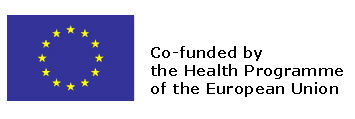RD-CODE
In January 2019, the European Union launched another project called RD-CODE (Rare Disease Code) with the participation of DIMDI and BfArM as its legal successor.
The aim of the project was to establish ORPHAcodes for the coding of rare diseases (RD) within the framework of existing national coding systems. This should further promote the standardisation and interoperability of RD coding at EU level.
With the help of the tools ‘Standard procedure and guide for the coding with ORPHAcodes’ and ‘Specification and implementation manual of the masterfile’ developed in the RD-Action project, ORPHAcodes were implemented in the coding systems of the four European countries participating in the RD-CODE project. The experience gained led to an adaptation of the instructions and recommendations for the implementation of ORPHAcodes, which can be used by other countries in the future. Recommendations were also developed for coding of patients without an identifiable diagnosis. The updated versions of the file ‘Master file for the statistical reporting with ORPHAcodes’ and the documents ‘Specification and implementation Manual for the Master file for statistical reporting with ORPHAcodes’ and ‘Standard procedure and guidelines for coding with ORPHAcodes’, as well as the document ‘Existing experiences and guidelines about the coding of undiagnosed rare disease patients’ are available on theRD-CODE website. Videos on the topics ‘Introduction to guidelines for ORPHAcoding’ and ‘Guidelines for coding undiagnosed patients’ are also available there.
Further information on the project can be found on the RD-CODE website. The RD-CODE project ended on 31.12.2021.
Additional information about the international EU projects on the web

Disclaimer RD-CODE:
This website is part of the project RD-CODE which has received funding from the European Union’s Health Programme (2014-2020).
The content of this website represents the views of the author only and is his/her sole responsibility; it cannot be considered to reflect the views of the European Commission and/or the Consumers, Health, Agriculture and Food Executive Agency or any other body of the European Union. The European Commission and the Agency do not accept any responsibility for use that may be made of the information it contains.
